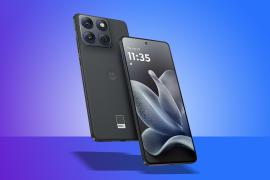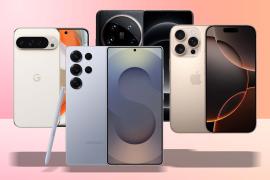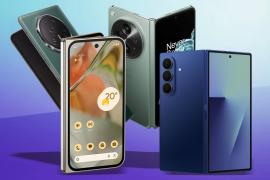The Galaxy S25 FE is the first sensibly-priced Samsung phone I’ve enjoyed using in years
Is this the Fan Edition formula finally perfected?
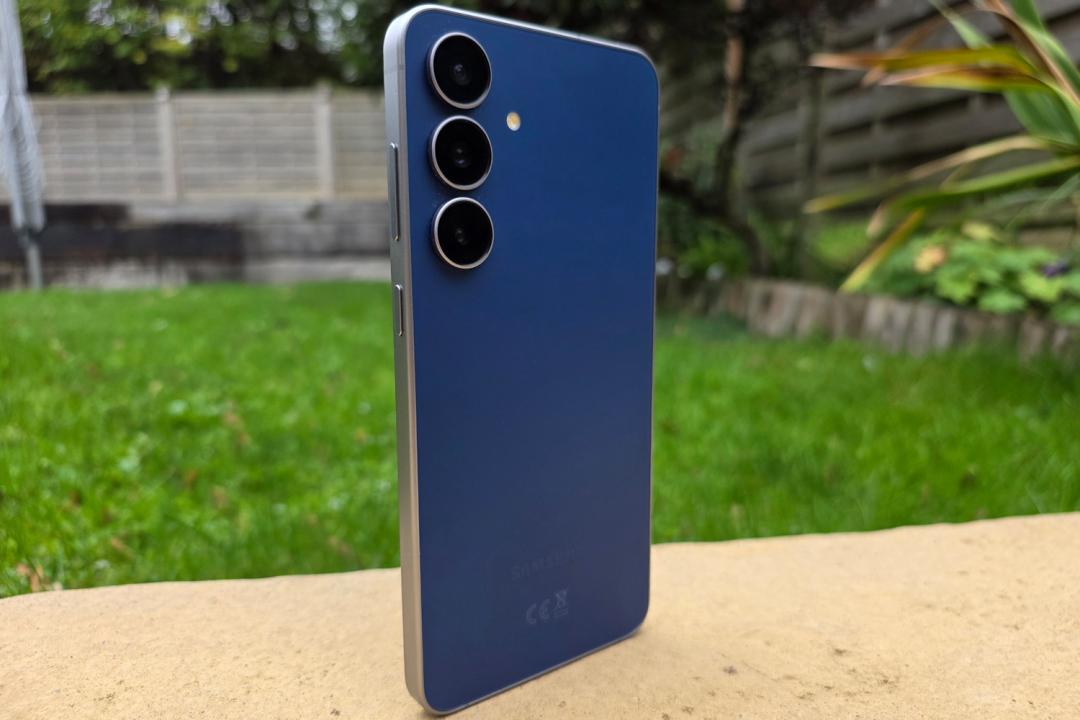
Stuff Verdict
Narrows the gap to the mainline Galaxy S25 models in ways its predecessors never quite managed. The Galaxy S25 FE is a dependable mid-ranger that’ll please Samsung purists.
Pros
- Premium looks and no software skimping
- Cameras all put in a solid effort
- Consistently strong battery life
Cons
- Claimed charging speeds don’t seem to hold up in reality
- Strong competition in the UK and Europe
Introduction
Ever since the first Fan Edition phone appeared, Samsung has steadily closed the distance to its upper-tier Galaxy S series. Now we’re at the point you need a microscope to see where the mid-range meets the high end, as the Galaxy S25 FE has left fewer things than ever on the cutting room floor.
You’re getting the same screen size, same battery capacity and same charging speeds as the Galaxy S25+. Same Galaxy AI smarts, too. The design is basically a dead ringer. Yet with pricing having stayed roughly in line with the outgoing Galaxy S24 FE at $650/£649/€749, it’s considerably easier on the wallet.
Arriving a month earlier than usual, most affordable Galaxy S25 model finally also gets some much-needed breathing room before the inevitable Galaxy S26 generation arrives as expected early next year. Having now used one for a few weeks, that’s just one of the reasons I’m finding it easier to recommend than any FE phone before it.
How we test smartphones
Every phone reviewed on Stuff is used as our main device throughout the testing process. We use industry standard benchmarks and tests, as well as our own years of experience, to judge general performance, battery life, display, sound and camera image quality. Manufacturers have no visibility on reviews before they appear online, and we never accept payment to feature products.
Find out more about how we test and rate products.
Design & build: talks the talk
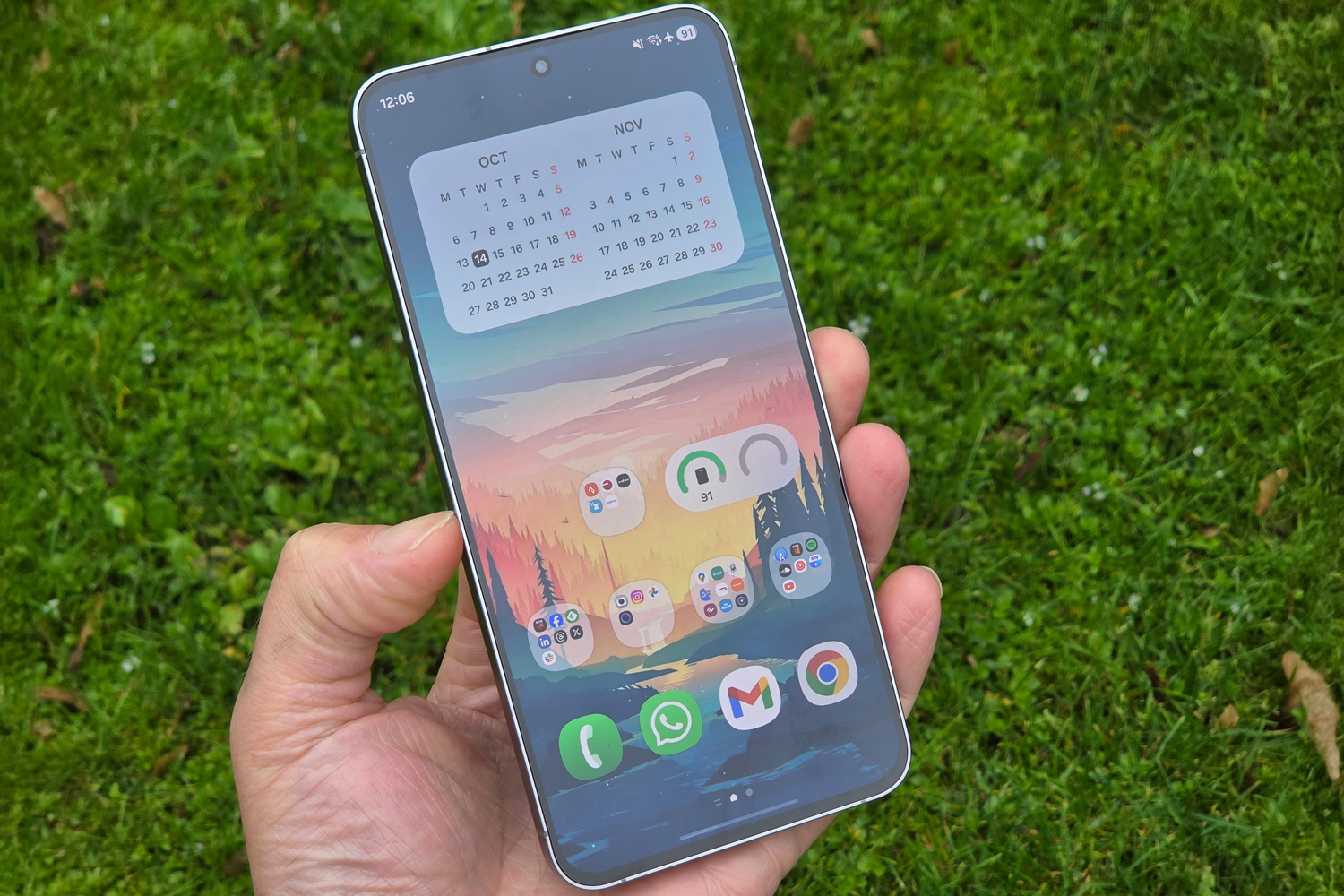
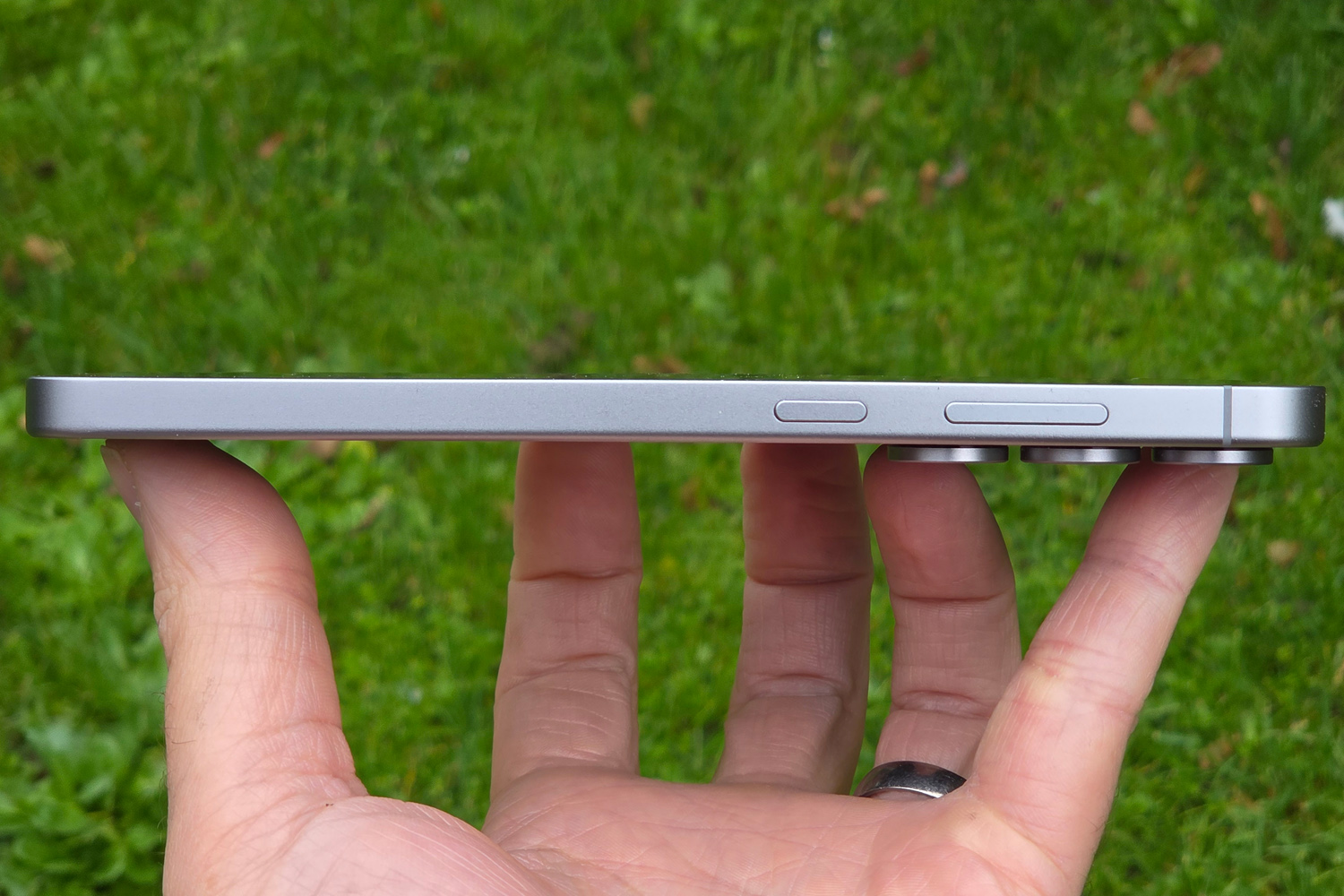
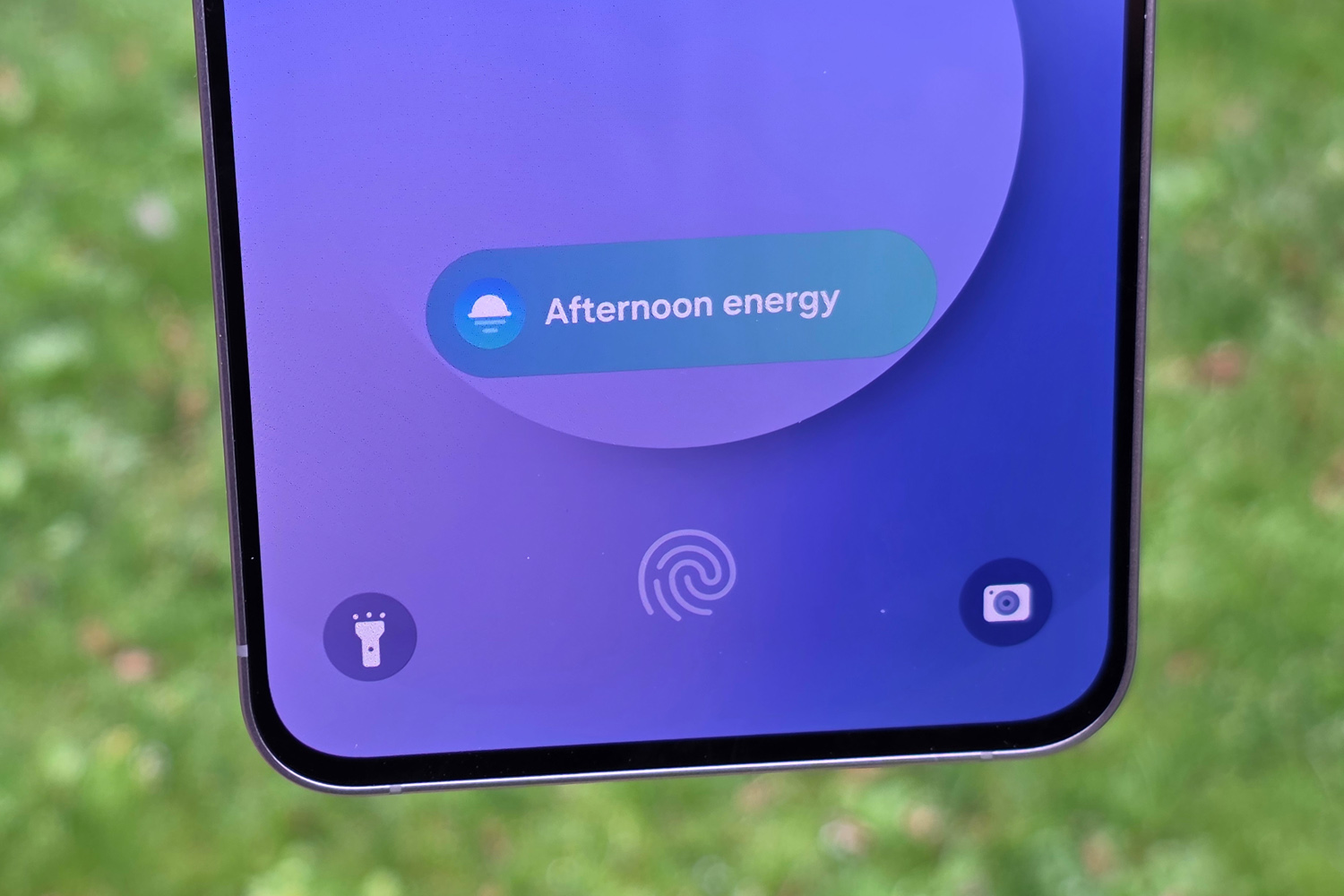
You’d need Sherlock Holmes’ power of deduction to tell the Galaxy S25 FE apart from its Galaxy S25+ bigger brother – or an encyclopaedic knowledge of Samsung’s design trends. With a glass front, flat metal frame made from the same ‘enhanced Armor Aluminium’, and glass rear, the only visual clues are the contrasting colours around the edge and rear camera lenses.
My Navy review unit has a silver metal frame, while the S25+ goes for a blue to match its rear panel. It’s a similar story for the Icyblue, Jetblack and White colour options, none of which are a major break from the palette Samsung has been using for the last few years.
OK, the FE is marginally thicker at 7.4mm, but you’d need a set of callipers to spot the difference, and both phones weigh a respectable 190g – neither featherweight nor enough to truly weigh down your pockets. It’s as close to a full-fat Galaxy S phone as any Fan Edition has been to date, which is a huge compliment to Samsung’s design team.
Even better, the whole thing is IP68 resistant. While some flagships now claim IP69 protection against high pressure water jets, it’s not something I typically encounter on a day-to-day basis, so being able to survive and accidental dunking in my kitchen sink or garden pond is more than enough for me. The Gorilla Glass Victus+ display has so far proven resistant to all scrapes and scratches, too.
You get a choice of fingerprint or facial recognition biometrics, though only the former is deemed good enough for your banking apps. Both were quick enough at skipping me past the Android lock screen, as far as mid-tier handsets go.
Screen & sound: shine on

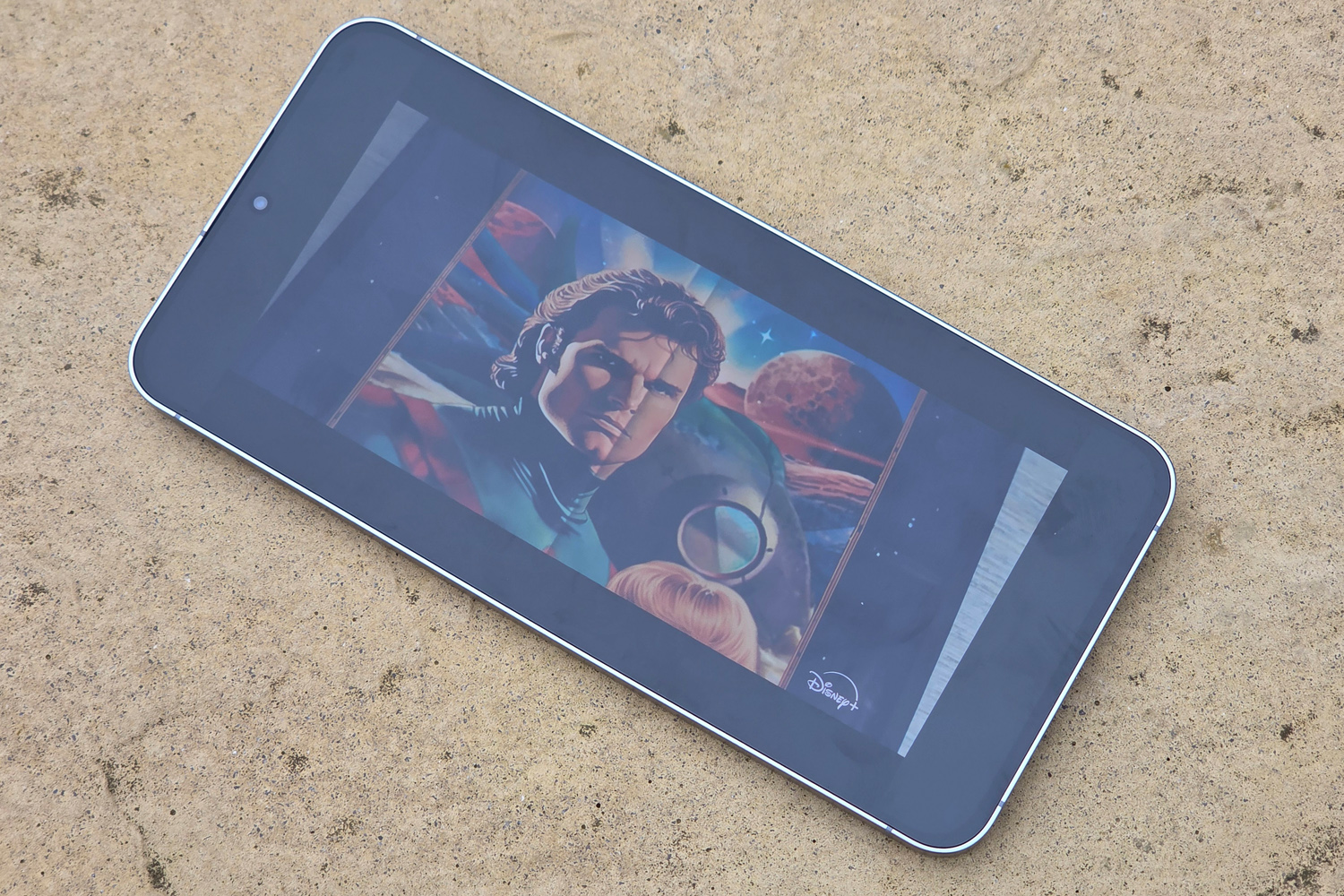
It hasn’t grown at all, but the Galaxy S25 FE’s 6.7in AMOLED display has slimmer bezels than its predecessor. It really helps the phone give off flagship vibes, though if you look closely you’ll spot the bottom edge is slightly more pronounced than the others.
The 2340×1080 resolution can’t match the pricier Galaxy S25+, which made the jump to QHD a generation prior, but is still in the minority; a lot of flagships still stick to FHD+, so there’s really nothing to complain about here. Small font text is perfectly legible and images have great definition.
You’re given a deceptively simple choice of two refresh rate modes, but a little digging suggests the Adaptive setting can drop as low as 1Hz for static content. LTPO tech isn’t super common on mid-range phones, so it’s great to see Samsung finding room in the budget here. It’ll really help with power efficiency, especially if you use the always-on display. At the other end of the scale, 120Hz scrolling was delightfully smooth.
Samsung’s trademark AMOLED colours are present and correct, being vivid and expressive without being offensively garish. Contrast is phenomenal and dark movie scenes really make the most of the panel’s ability to display deep blacks. It really keeps pace with pricier phones in pretty much every respect.
That includes brightness, with a claimed full-screen peak of 1900 nits. That’s a more realistic figure than some phone brands list, where a small portion the screen can boost much further when showing HDR content, but isn’t reflective of daily use. In my experience the S25 FE was perfectly legible outdoors – though I wasn’t testing at the height of summer, and there’s no question flagship alternatives go even higher.
A tuning tweak to the down-firing main speaker and earpiece tweeter has given the Galaxy S25 FE punchy audio that gets decently loud. I’d say sound feels that bit wider than it did on the old phone, with better low end presence – though this is still a phone, so bass heads will still want to reach for their headphones.
Cameras: two out of three ain’t bad
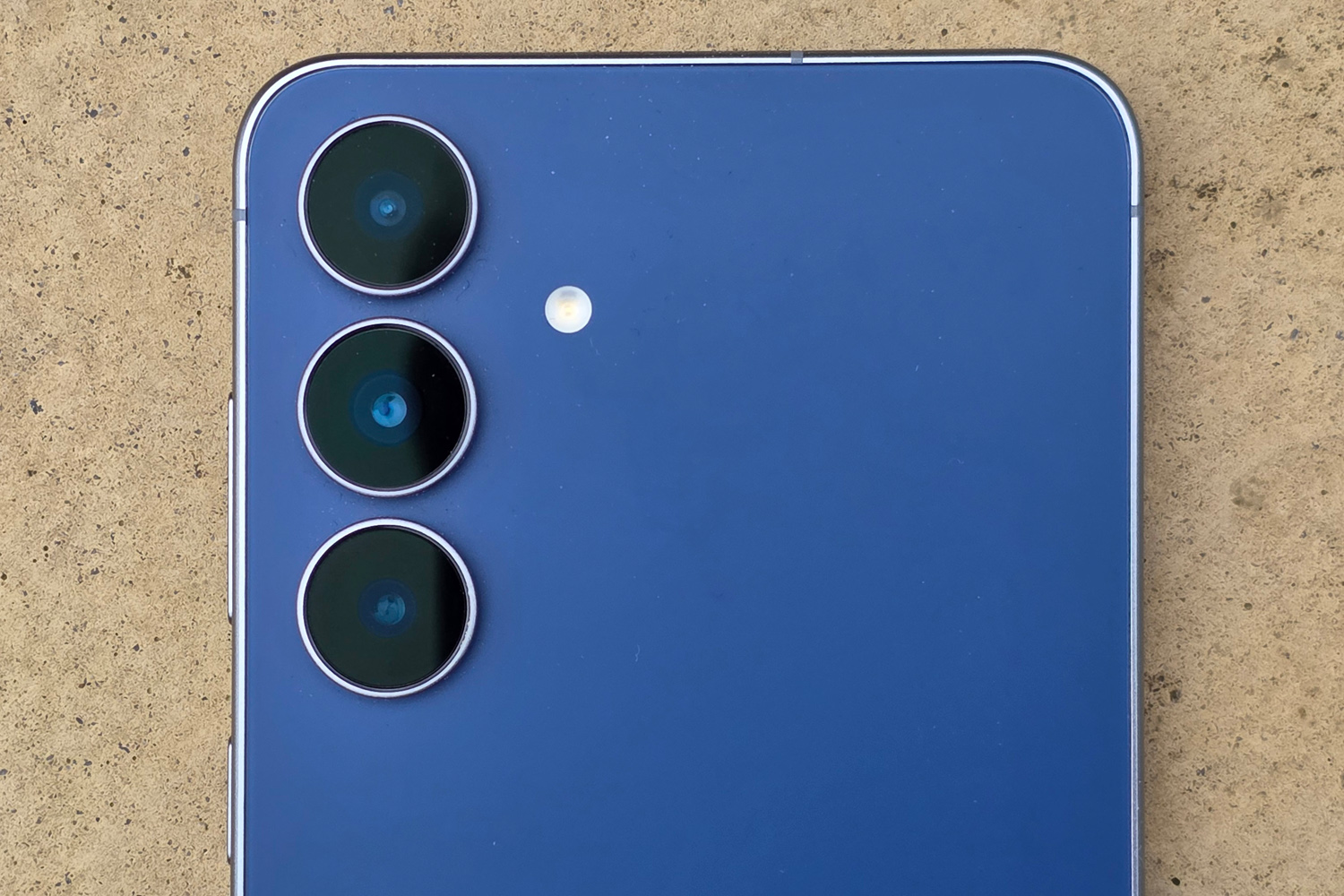
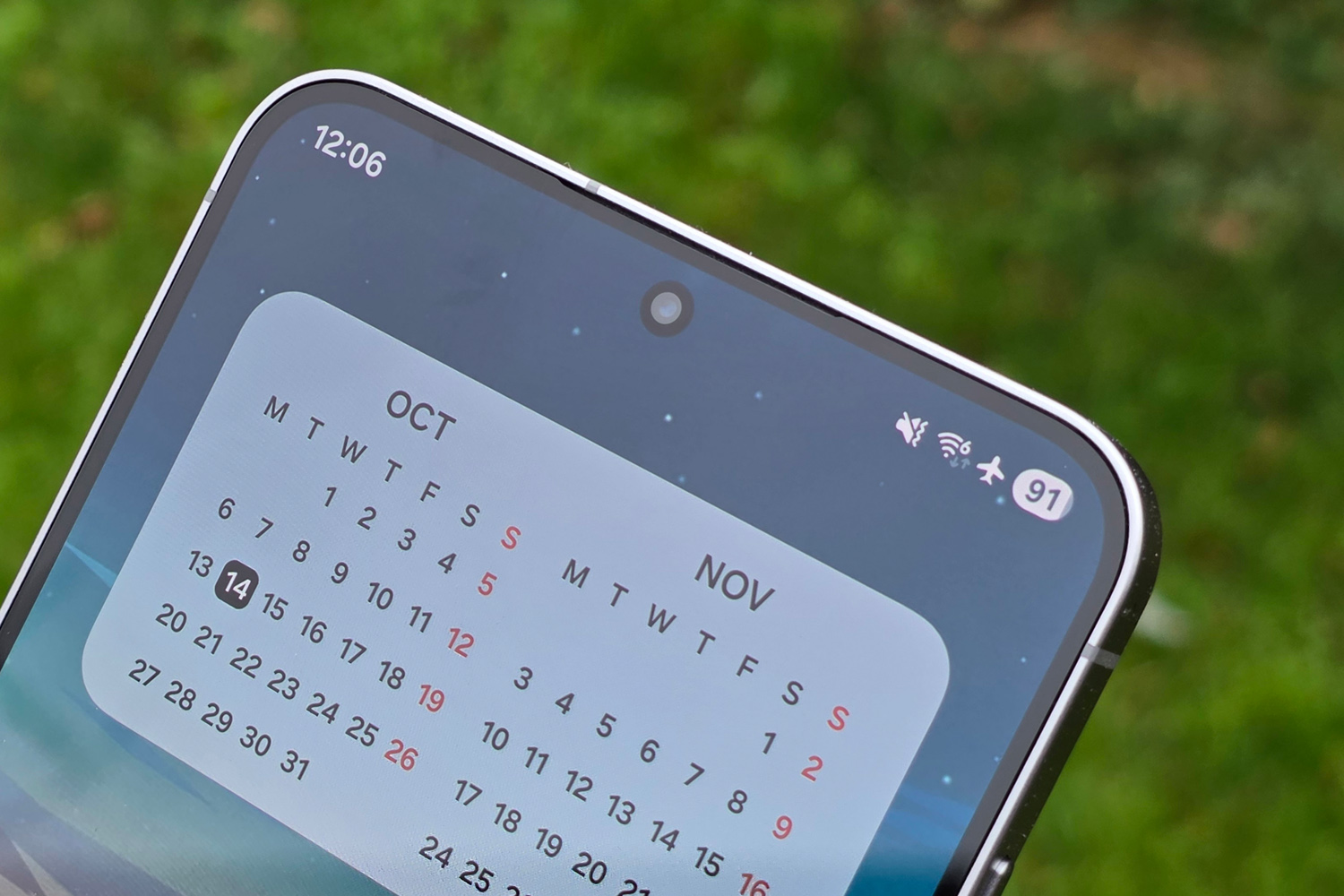
The three snappers at the rear of the Galaxy S25 FE are unchanged between generations, meaning you’re getting the same optically-stabilised 50MP main shooter, same 12MP ultrawide, and same 8MP telephoto good for 3x optical zoom as the outgoing S24 FE. That’s not a whole lot removed from the pricier Galaxy S25+, which narrowly keeps the lead with its 10MP telephoto lens. Even the front-facing selfie camera is now up to par, with an S25+ matching 12MP.
That means any image quality gains between generations are largely down to improved algorithms, but given how well they hold up in most lighting conditions, I’m not complaining. Had this phone turned up a few years ago, its photos would be truly flagship-grade, with loads of dynamic range, convincing HDR processing, and plenty of resolved detail.











Colours are largely on point across all three rear snappers, if a little boosted from reality (as is the Samsung way). The ultrawide takes just a half-step backwards when faced with extremely bright scenes. While the zoom lens has the fewest pixels to play with – and pics are seemingly upscaled to 12MP by default to keep resolutions consistent with the other cameras – my test snaps still looked sharp, with plenty of contrast.
Things get softer and noise starts to creep up when you step inside, and get progressively worse the darker it gets. The Night mode can make all the difference here, but it’s not too keen to step in automatically unless it’s probably devoid of light. I regularly had to force it on manually to get clearer, better defined low light photos. Here’s where today’s flagship phones have taken a noticeable step forward. Still, at least colours are consistent and largely lifelike.



Selfies are, unsurprisingly, on par with the mainline S25. The portrait mode still can’t catch the finest of loose hairs, and contrast can seem a little low at times, but my results were still pretty pleasing. For the money, it overall puts in a very good showing.
Software experience: freshly baked
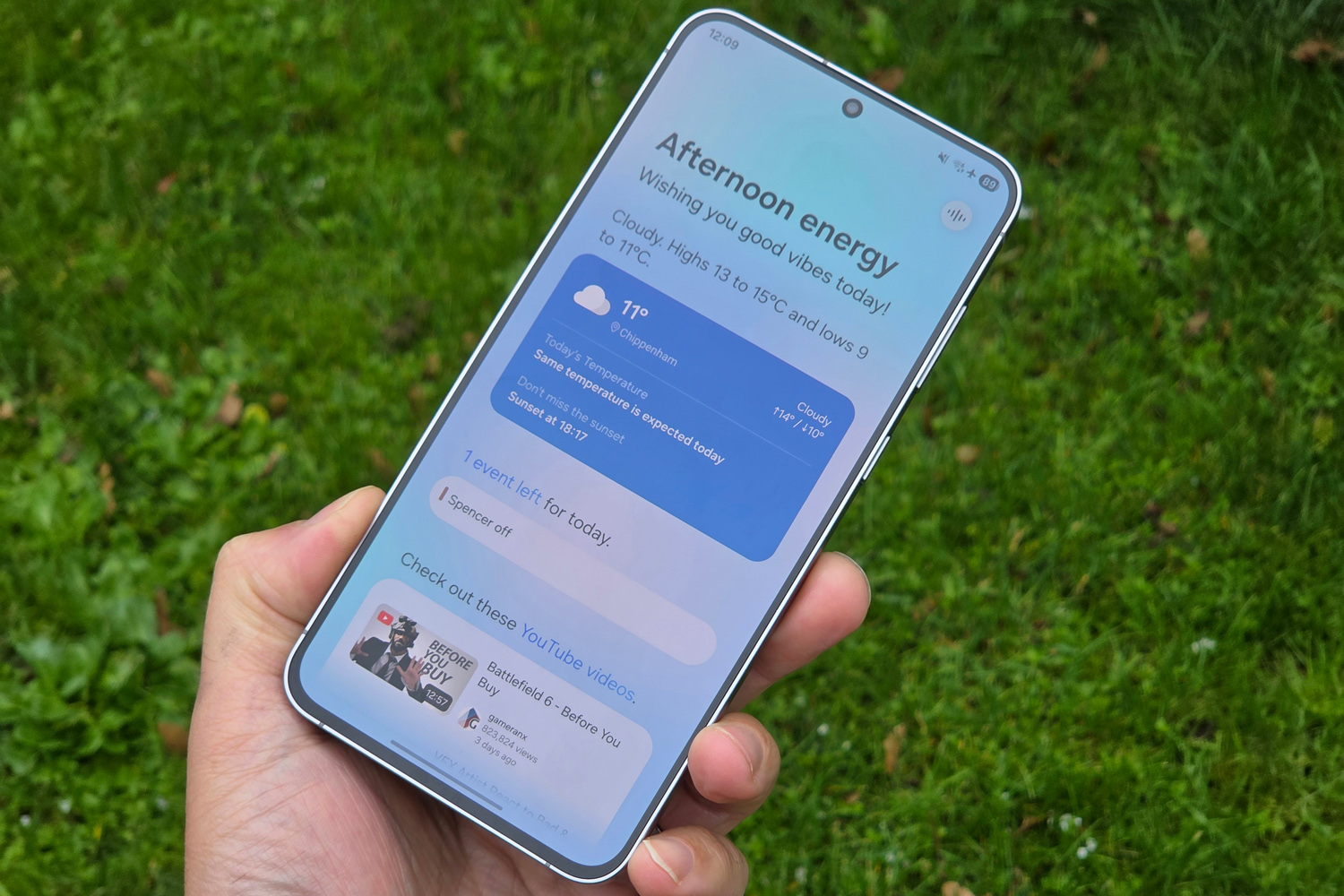
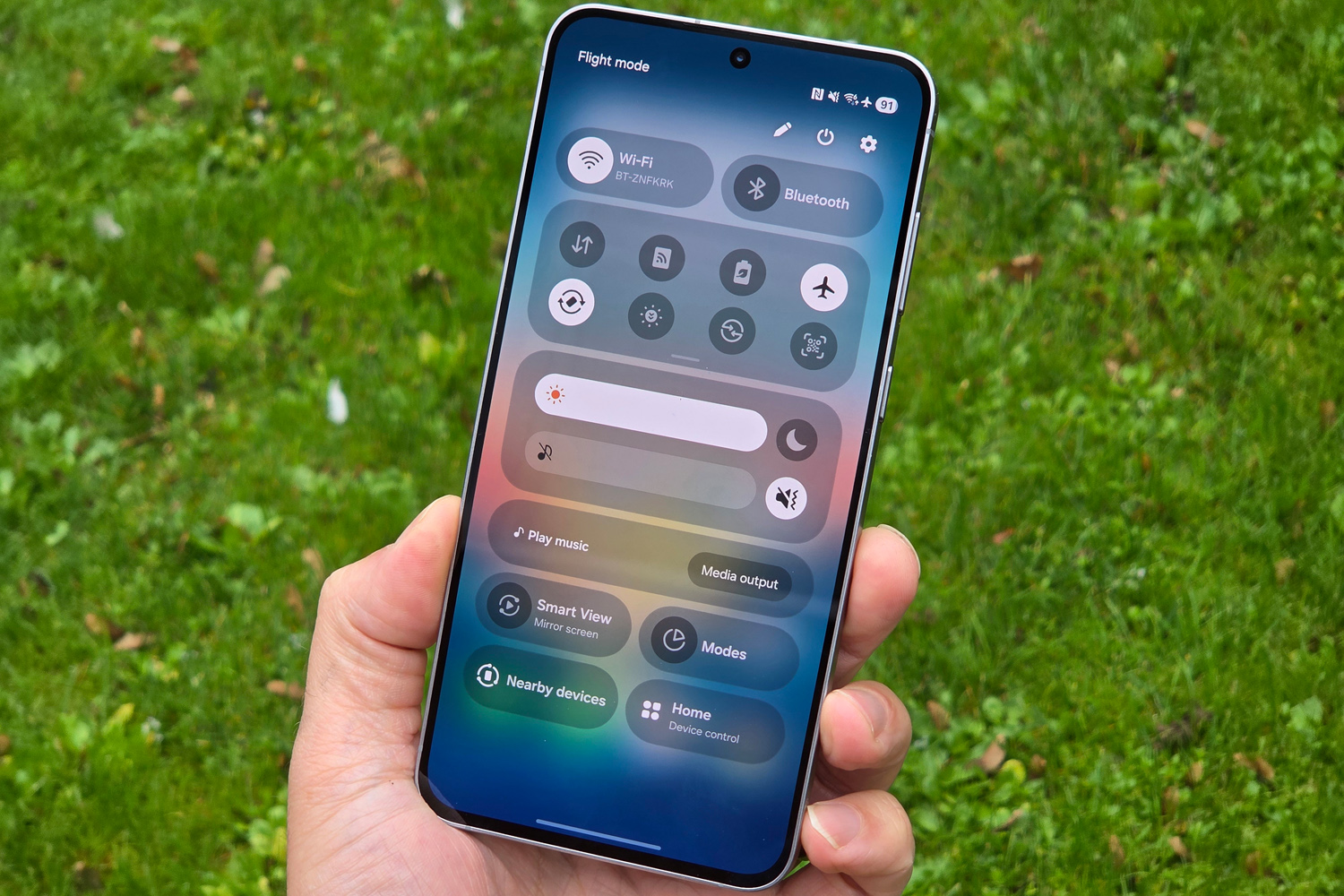
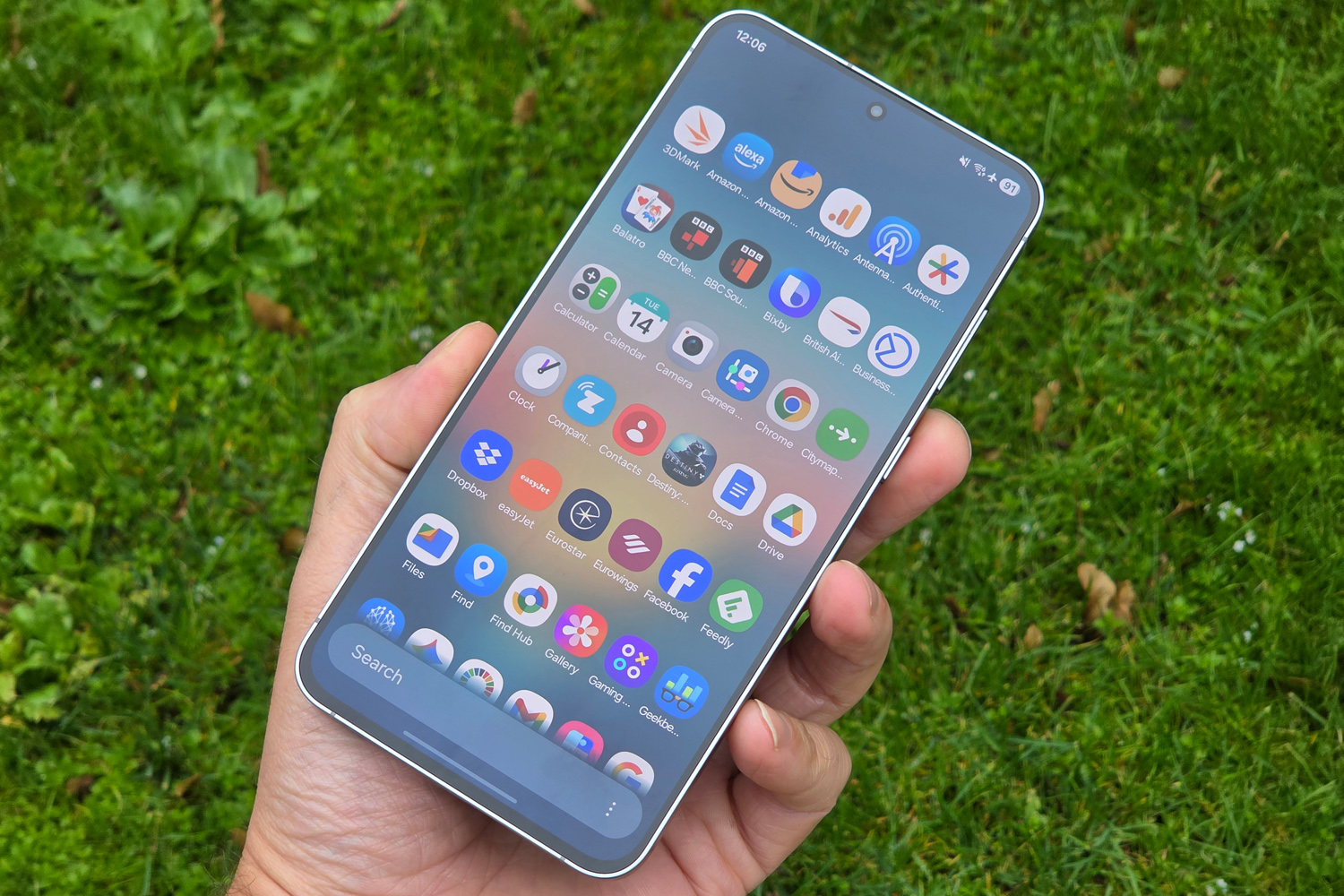
With seven years of new Android generations and security patches pledged, the Galaxy S25 FE is in it for the long haul. This is as good as it gets for software support in a mid-range phone, with only Google promising similar. It arrives running Android 16, too, so there’s no waiting around at launch for the latest version – as is the case with some rival brands.
This isn’t my first experience of OneUI 8 – it already made an appearance on the Galaxy Z Fold 7 – but it is the first time any S25 has it right out of the box. Depending on where you live, your S25, S25+ or S25 Ultra might still be waiting on its over-the-air update.
Feature-wise there’s nothing missing here compared to the galaxy S25. That means a full contingent of Galaxy AI-powered apps and assists, including real-time language translation during phone calls, a writing helper that can turn your waffle into more work-appropriate sentences, and a web browser add-on that can summarise long web pages. That’s on top of a fully-featured image editor that can generationally move and remove objects, or create cartoon versions of your photos.
It all works as expected, and while I didn’t have an S25 available for side-by-side tests, seemed just as quick as I remember despite having less RAM and a slower chipset. That’s partially because some AI is handled in the cloud, of course.
Now Brief continues to grow on me with each new Samsung phone I test, putting weather reports, sports scores and news bulletins in one place for an at-a-glance rundown of my day before I get up in the morning. It could do a better job of not recommending YouTube videos I’ve already watched, but it’s otherwise handy to have appearing on the lock screen. Otherwise a mix of Bixby and Google Gemini run the show, the former being on hand for more device-based requests like changing the screen brightness.
It’ll also play nicely with your other Samsung kit, handing off to a Windows laptop with the Phone Link and Link to Windows apps.
The rest of the interface is trademark Samsung, with plenty of own-brand apps (many of which duplicate Google’s own) and menu layouts that are very easy to find your way around. Visually it’s only a mild change from last year’s OneUI iteration, but it feels fresh and, crucially, familiar to long-time Samsung owners.
Performance & battery life: comfortable in the mid-tier
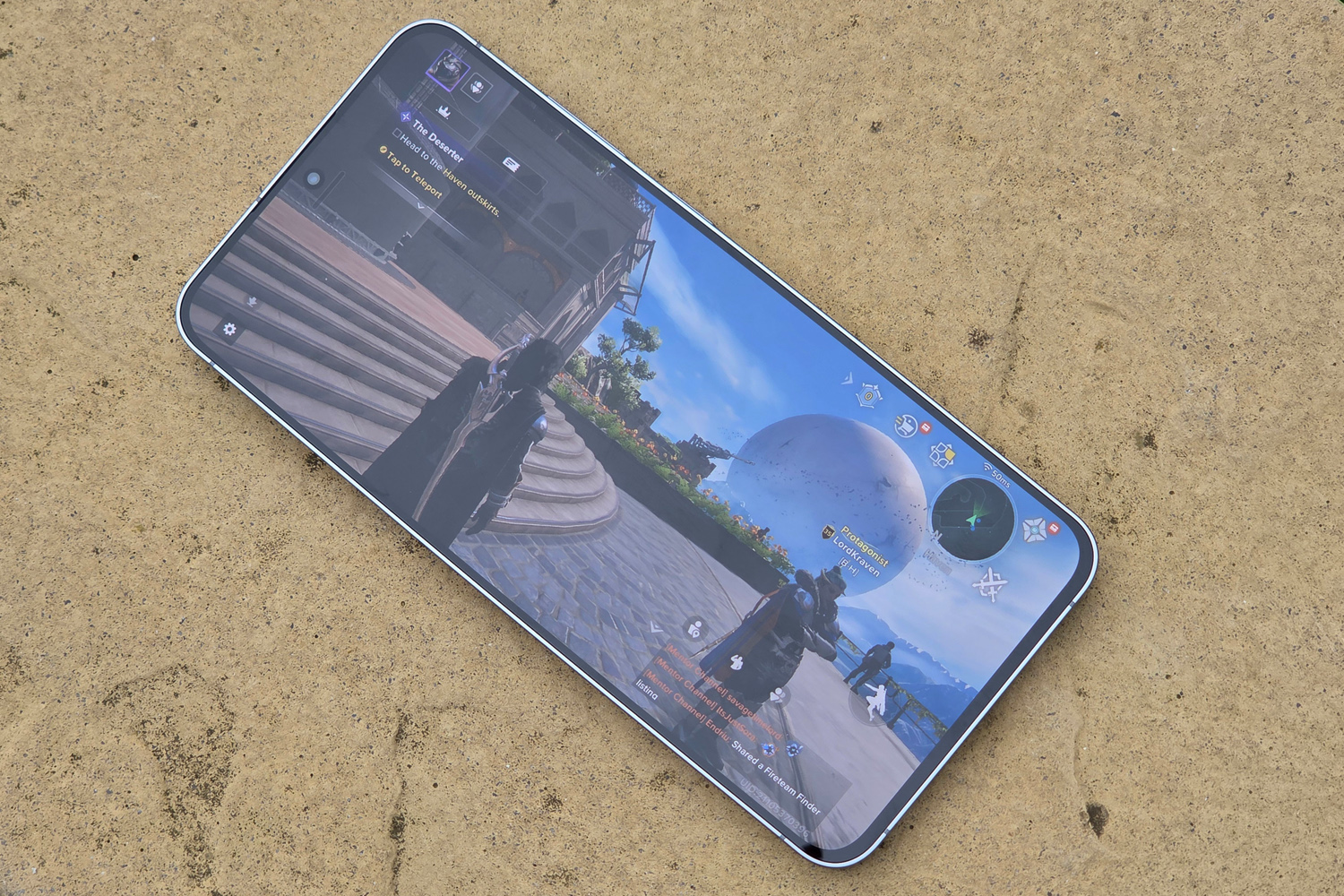
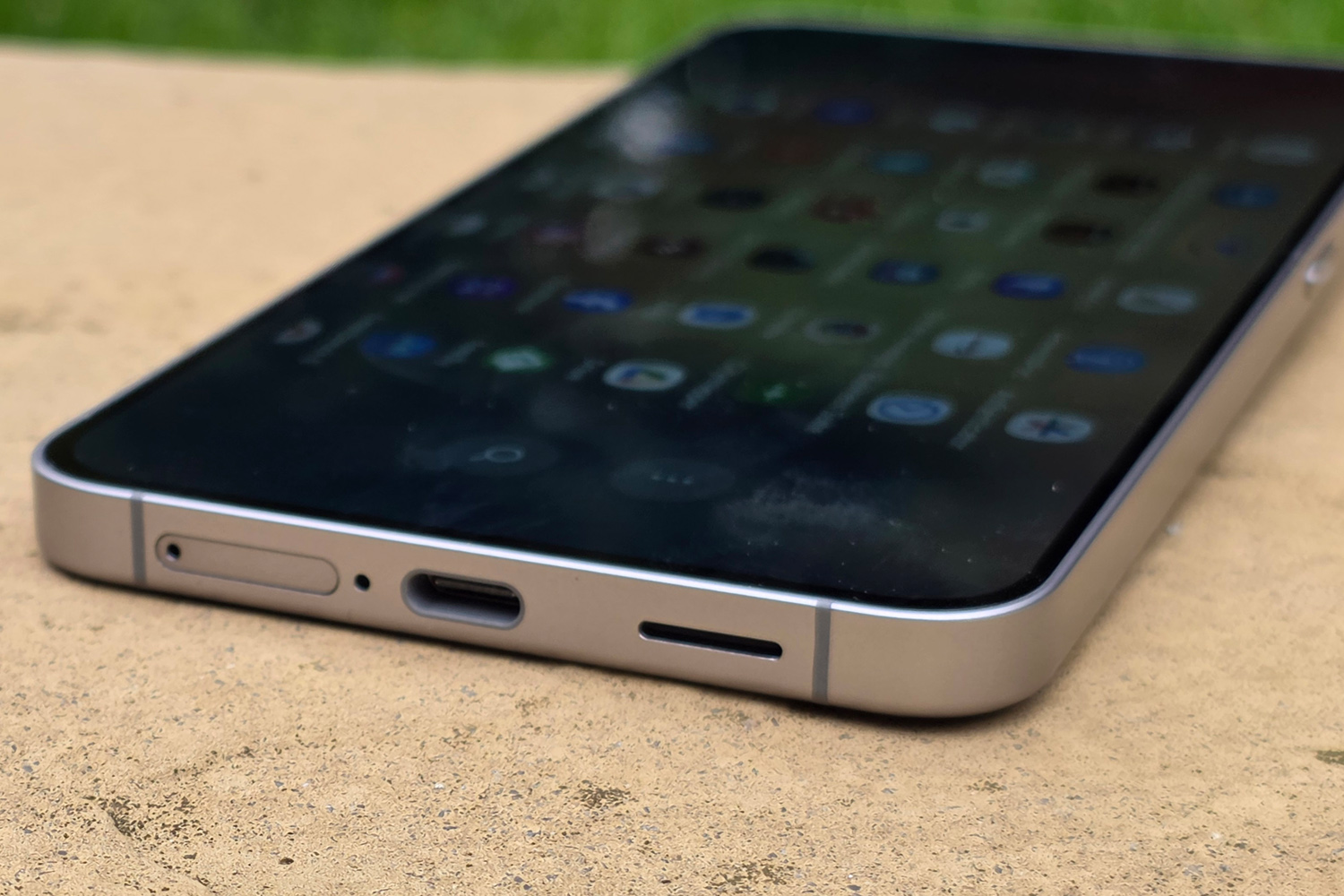
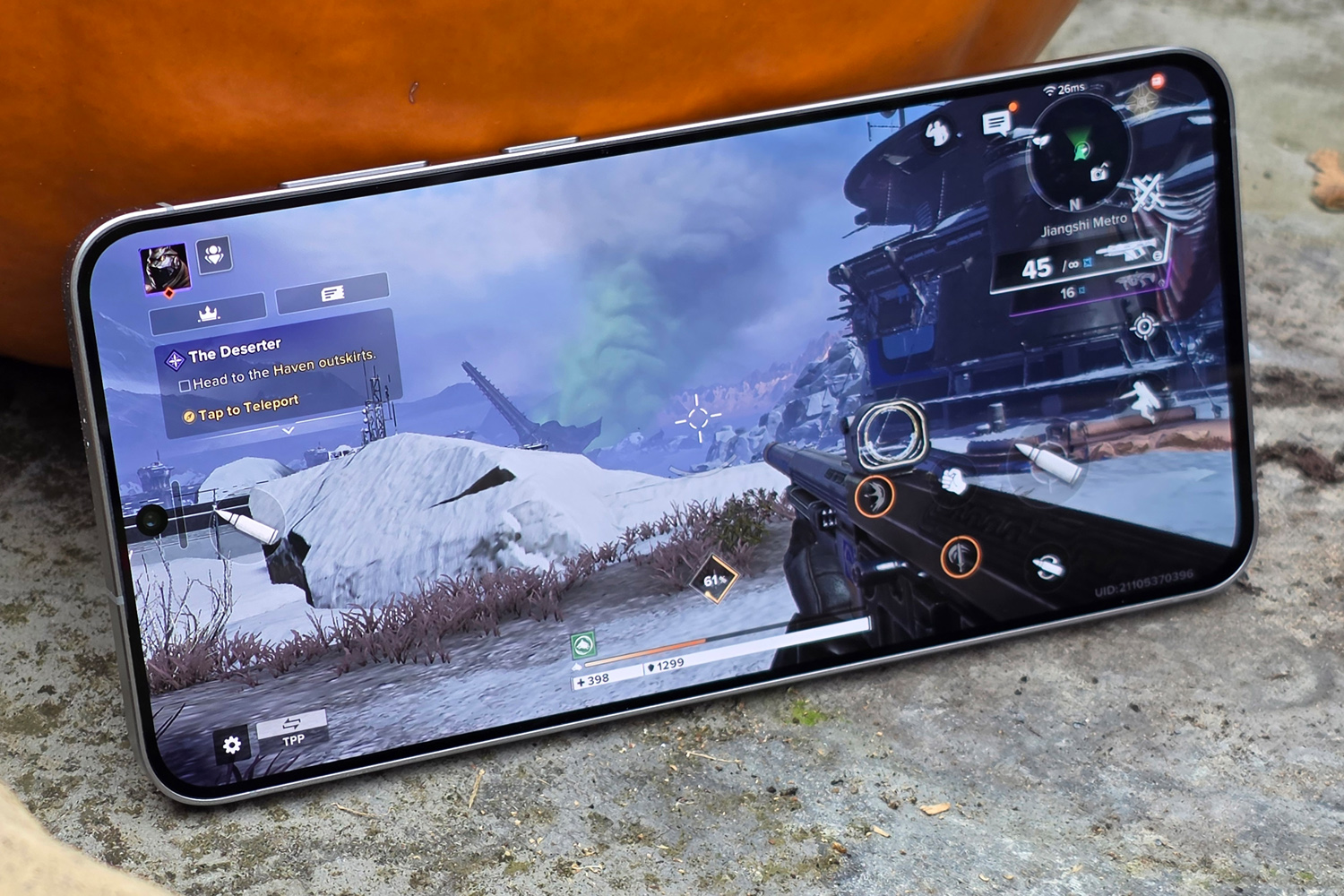
Home-grown chipsets have become a regular sighting in FE-badged phones, but unlike last year’s effort, the Galaxy S25 FE isn’t using a cut-down version. It’s packing the same Exynos 2400 you’ll find in the Galaxy Z Flip 7 FE, and only a short while ago was the firm’s flagship silicon. Here it’s paired with 8GB of RAM, putting it slightly behind the Galaxy S25+, and you can get one with either 128GB, 256GB or 512GB of on-board storage.
In synthetic tests I saw a respectable year-on-year improvement over the Galaxy S24 FE and its efficiency-minded CPU. The S25 FE traded blows with the more expensive Nothing Phone 3 depending on the test, and while it was beaten by Snapdragon 8 Elite-powered handsets – including the mainline Galaxy S25 – I’d say Samsung has got the price/performance ratio spot on.
Crucially, this feels like a top-tier phone in everyday use. The 8GB of system memory never felt like a stumbling bock, with apps opening quickly enough and not needing to reload when lightly multitasking. Samsung’s version of Android is brilliantly optimised at this point, even if it’s one of the more radical transformations from Google’s default interface, so I didn’t feel I was giving anything up over a flagship handset.
| Samsung Galaxy S25 FE benchmark scores | |
|---|---|
| Geekbench 6 single-core | 2162 |
| Geekbench 6 multi-core | 7045 |
| Speedometer 3.1 | 20.6 |
| Geekbench AI | 4251 |
| PCmark Work 3.0 | 14606 |
| 3Dmark Solar Bay | 8595 |
| 3Dmark Wildlife Extreme | 4360 |
That said, Exynos remains behind the competition when it comes to gaming. Artificial tests put it behind almost all the mid-range competition, and while demanding Play Store games ran well enough, they’d often default to slightly lower graphical settings. Destiny Rising was still very easy on the eye, though with fewer jagged edges than I’d expect from a more affordable handset and a largely consistent frame rate.
Although Samsung says it has fitted a 10% larger vapour chamber here than the Galaxy S24 FE got, the whole thing warmed up noticeably during gameplay. That could impact performance if you’re a particularly hardcore player, or want to emulate especially intensive platforms.
The Galaxy S25 FE draws level with the Galaxy S25+ on battery capacity, with an identical 4900mAh cell. While rivals from Chinese brands are now using silicon-carbon tech to go even bigger, Samsung’s software optimisations go a long way: this phone comfortably lasts a full day of pretty heavy use over a mostly 5G connection, meaning I could take it on a work event and still make it home without needing to plug in on the return train. With lighter use while working from home I’d frequently make it to a second morning, and could avoid plugging in overnight. That’ll be plenty for most people.
On paper, charging speeds should be equally as impressive as the pricier Galaxy S25+; both phones support 45W wired top-ups, which is currently as quick as it gets in Samsung land. In reality, though, it wasn’t quite up to par, needing just under 90 minutes for a complete refuel versus 70 on the higher-end phone. This is pretty pedestrian by Chinese phone standards, but a 50% top-up in half an hour is still usefully quick.
Wireless charging maxes out at a slower 15W, and there’s no Qi2 support here – though there’s nothing stopping you from adding it with a magnet-lined phone case.
Samsung Galaxy S25 FE verdict

Depending on where they live, Samsung owners looking to upgrade their tired old handset for sensible money will find the Galaxy S25 FE is a slam dunk. It looks the part, has a gorgeous screen, very respectable battery life and a lead camera that takes very tidy photos. Long-term software support is a boon, too. It’s particularly appealing in the US, where there simply aren’t that many rivals.
The usual Fan Edition caveat (that the next mainline Galaxy S generation is just a few months away from launching) has been softened a bit by launching earlier than usual, and the Galaxy S25 series is holding its value better than previous years, so UK and European phone fans should also check it out.
Unlike the US, though, those territories are well served with sensibly-priced rivals with more compelling hardware. If you’re not wedded to OneUI, I wouldn’t rule out the Poco F7 Ultra, the Nothing Phone 3 (which is already seeing healthy discounts) or the Xiaomi 15T Pro – all have the Galaxy S25 FE beaten in one or two key areas.
Stuff Says…
Narrows the gap to the mainline Galaxy S25 models in ways its predecessors never quite managed. The Galaxy S25 FE is a dependable mid-ranger that’ll please Samsung purists.
Pros
Premium looks and no software skimping
Cameras all put in a solid effort
Consistently strong battery life
Cons
Claimed charging speeds don’t seem to hold up in reality
Strong competition in the UK and Europe
Samsung Galaxy S25 FE technical specifications
| Screen | 6.7in, 2340×1080 AMOLED w/ 120Hz |
| CPU | Samsung Exynos 2400 |
| Memory | 8GB RAM |
| Cameras | 50MP+8MP+12MP rear 12MP front |
| Storage | 128/256/512GB on-board |
| Operating system | Android 16 w/ OneUI 8 |
| Battery | 4900mAh w/ 45W wired, 15W wireless |
| Dimensions | 161x77x7.4mm, 190g |


